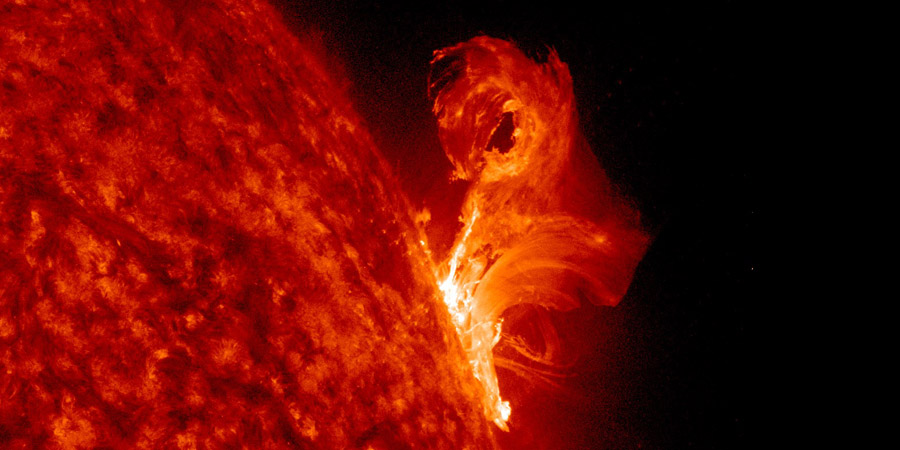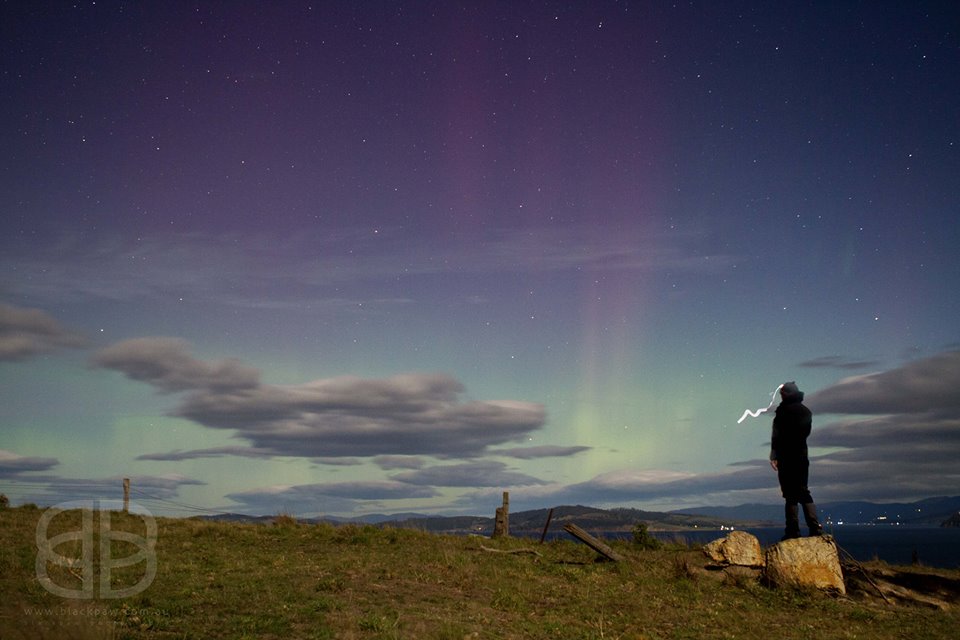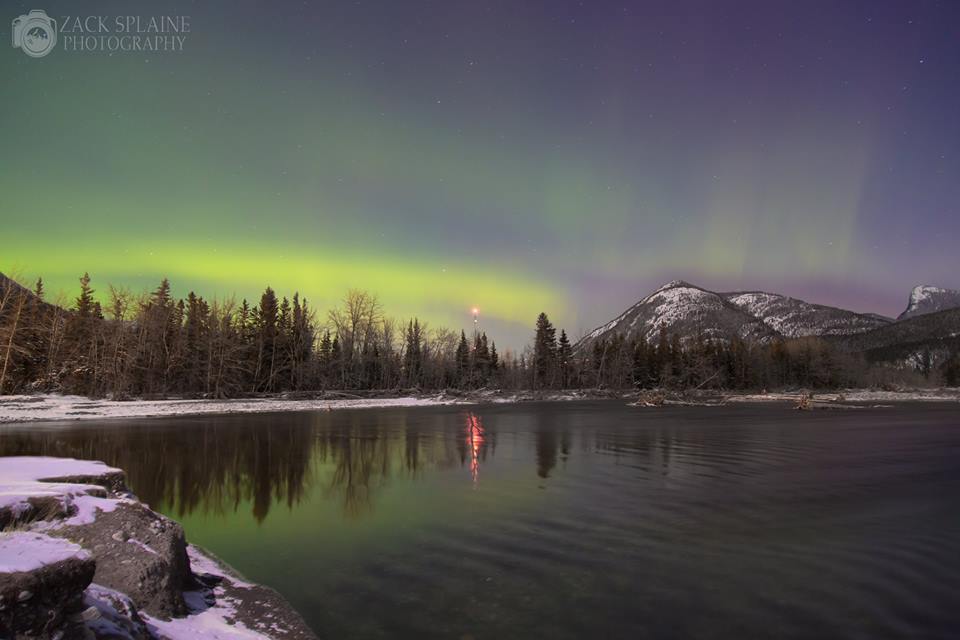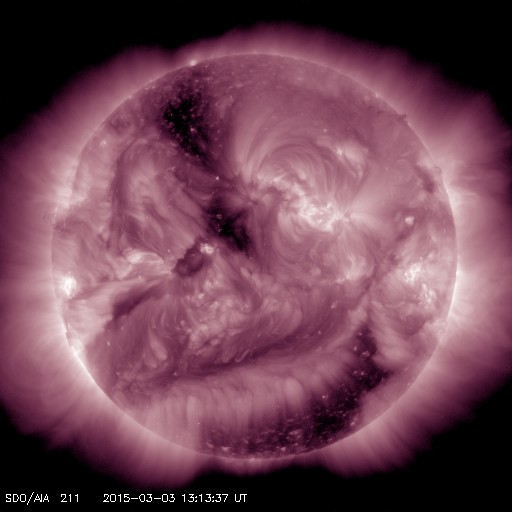M-class activity from sunspot region 2290, coronal holes
Tuesday, 3 March 2015 13:31 UTC

Yesterday was forecast to be a calm day on our star, no significant solar flares were expected. Sunspot region 2290 however decided it wasn't in agreement with that forecast and erupted with four M-class solar flares, the strongest of those solar flares was an M8.2 solar flare that peaked today at 01:35 UTC.
It's a shame that sunspot region 2290 only became active yesterday as it was already located near the west limb at the time of the eruptions. This means that the numerous coronal mass ejections that were launched by these solar flares are all directed away from Earth.
Coronal hole effects
The past few days we have been under the influence of a coronal hole high speed solar wind stream from a southern hemisphere polar coronal hole. Minor G1 geomagnetic storming was observed and many high latitude sky watchers managed to capture stunning aurora pictures:
Image: Aurora Australis as seen from Tasmania, Australia by Blackpaw-Photography.
Image: Aurora Borealis captured by Zack-Splaine-Photography from Alberta, Canada.
Another coronal hole is now facing Earth and an enhanced solar wind stream could arrive in about three days from now. More high latitude auroral displays are likely in the days ahead so keep your eyes on the sky!
Image: Our star in the 211 Angstrom wavelength as seen by SDO showing two prominent coronal holes.
Thank you for reading this article! Did you have any trouble with the technical terms used in this article? Our help section is the place to be where you can find in-depth articles, a FAQ and a list with common abbreviations. Still puzzled? Just post on our forum where we will help you the best we can!
Latest news
Latest forum messages
Support SpaceWeatherLive.com!
A lot of people come to SpaceWeatherLive to follow the Sun's activity or if there is aurora to be seen, but with more traffic comes higher server costs. Consider a donation if you enjoy SpaceWeatherLive so we can keep the website online!

Space weather facts
| Last X-flare | 2024/03/28 | X1.1 |
| Last M-flare | 2024/04/24 | M1.4 |
| Last geomagnetic storm | 2024/04/19 | Kp7 (G3) |
| Spotless days | |
|---|---|
| Last spotless day | 2022/06/08 |
| Monthly mean Sunspot Number | |
|---|---|
| March 2024 | 104.9 -19.8 |
| Last 30 days | 128.8 +21.5 |





